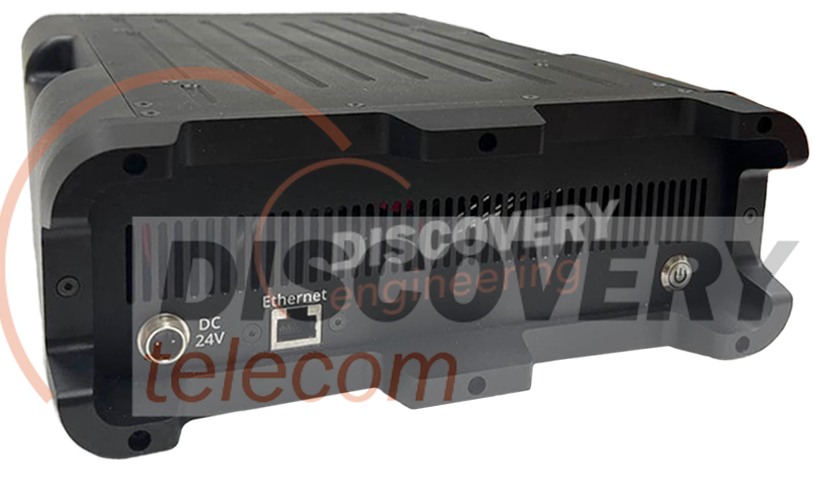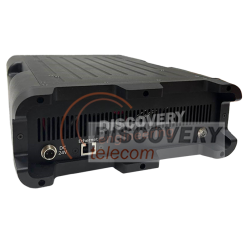 | Main Catalog Catalog IMSI Catchers and IMEI blockers IMSI Catchers and IMEI blockers Bug Hunter Bug Hunter |  |
Bug Hunter (TSCM). Unique anti-surveillance system to sweep bugs.

The newest device
Bug Hunter
|
Main characteristics
|
|||||||||||||||||||||||||||||||||||
Bug Hunter combines IMSI catcher and counter-surveillance capabilities (TSCM) into one platform
The software-hardware system Bug Hunter is designed for the detection and identification of electronic devices in cellular communication, wireless access devices using standard radio interfaces, current and prospective standards of radio telephony communication, and broadband access, with the capability of documenting radio exchange events and recording their identification data.
The system operates on the principle of continuous scanning of the frequency range to detect the operation of cellular communication and wireless access devices. For all detected devices, detailed information about their parameters is registered and recorded.
 |  |
For what IMSI catcher was added?
A typical TSCM system for detecting radio transmitting bugs would only use an RF sensor to detect suspicious devices. But bugs based on 3,4,5G cellular modems can emit a radio frequency signal at the level and frequency of other mobile devices, of which there may be many in the immediate environment.
Field of application
Main features
The device performs identification of:
• Base stations for GSM/UMTS/LTE (FDD/TDD)/NR cellular communication standards;
• Mobile devices for GSM/UMTS/LTE/NR cellular communication standards;
• Wi-Fi devices IEEE802.11 a.b.g.n, ac, h, y, j, ac (2.4-5GHz);
• Wi-Fi 6 and Wi-Fi 6E IEEE802.11ax (8GHz);
• IoT devices Bluetooth IEEE802.15.1 and ZigBee IEEE802.15.4;
• Bug Hunter detects and registers the operation of radio electronic devices, including emerging communication systems
The "Bug Hunter" is developed based on Software Defined Radio (SDR) technology, allowing fast software reconfiguration of the utilized electronic components to operate in any of the working frequency ranges and communication standards;
It offers the option to select either a panoramic spectrum overview or a frequency range from 70 MHz to 8 GHz (for Wi-Fi devices);
Frequency-amplitude detection of signals in the selected frequency ranges, based on exceeding the detection threshold;
Independent multi-channel receiving-transmitting unit with the following functions:
• Sensor power adjustment;
• Identification of base stations for GSM/UMTS/LTE (FDD/TDD)/NR cellular communication standards, including parameter determination:
| Communication standard | Detected parameters |
| GSM | MCC, MNC, LAC, Cell Identity, ARFCN, RxL, C1, C2, BSIC,
RAC, BAND, T3212, Neighbour BS List |
| UMTS | MCC, MNC, LAC, Cell Identity, URFCN, RSCP, code
scrambling PSC, Neighbour BS List (if transmitted) |
| LTE | ERFCN, Physical Cell Identity (PCI), RSRP, MCC, MNC,
TAC, Cell Identity (if transmitted), Neighbour BS List (if transmitted) |
| NR | ERFCN, RSRP, MCC, MNC, TAC, Cell Identity (if transmitted),
Neighbour BS List (if transmitted) |
• Identification of mobile devices in GSM/UMTS/LTE (FDD/TDD)/NR cellular communication standards with determination of IMSI/IMEI/TMSI parameters, manufacturer (Vendor), model (Model), and supported standards;
• Identification of Wi-Fi devices IEEE802.11 a,b,g,n,ac,h,y,j,ac (2.4-5GHz), including Wi-Fi 6 and Wi-Fi 6E IEEE802.11ax (8 GHz), with determination of parameters for access points: MAC, BSSID, Vendor, RSSI, SSID, Channel; for subscriber devices: MAC, Vendor, SSID;
• Identification of IoT devices Bluetooth IEEE802.15.4 and ZigBee IEEE802.15.1 with determination of MAC or ID for the device;
• Control of power supply activation and deactivation in power filter sockets (220V) and power adapters with adjustable output voltage of 5-24V and voltage relays for "dry contact" function;
• Availability of an Ethernet audio device for acoustic impact;
• Power supply from an external direct current source with a voltage of 24V;
• Detection radius: up to 50 m;
• Weight of the main unit: 6 kg;
• Dimensions of the main unit: 345x245x94 (LxWxH).
| Nº | Title | Q'ty |
| 1 | Transceiver unit | 1 |
| 2 | Control unit (comes with a laptop) | 1 |
| 3 |
Imitation signal terminal of cellular communication with Wi-Fi and 1pc
BT support - Xiaomi Redmi A1 smartphone
| 1 |
| Peripheral devices | ||
| 4 | Energenie EG-PMS2-LAN network filter | 1 |
| 5 | Ethernet Network switch D - Link DGS - 1005P | 1 |
| 6 | USB audio track | 1 |
 |
 Additional Product Information Additional Product Information |
 |
You may also be interested in the following products







 +44 20 3769 1919
+44 20 3769 1919
 Your basket
Your basket 
































